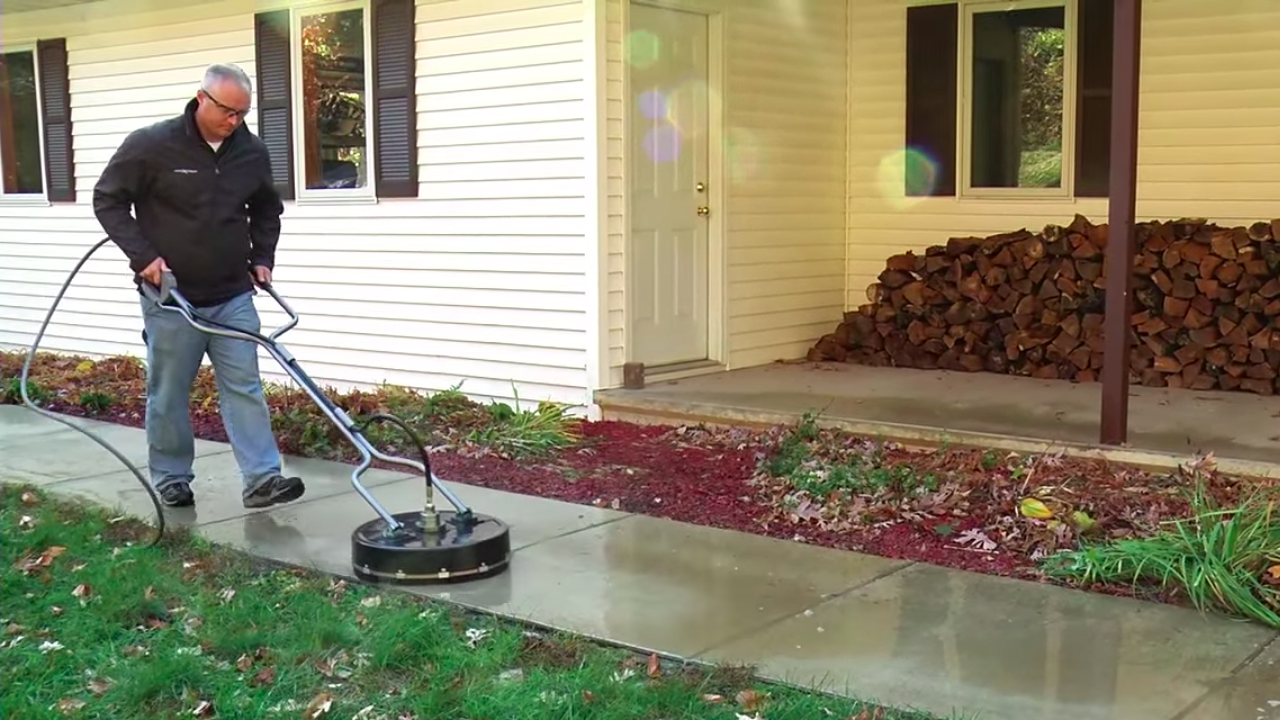
Pressure washing is an incredible tool for blasting away grime, mildew, and dirt from a wide range of outdoor surfaces. But here’s the catch — not every surface can handle that much force. In fact, some materials can be damaged instantly if you’re not careful. So how can you tell if your surface is too soft for pressure washing?
Let’s break it down so you can clean smarter — not harder. 💡🧼
🤔 Why Does Surface Hardness Matter?
Pressure washers are high-powered machines. Even residential units can push out water at 1,500 to 3,000 PSI (pounds per square inch). That kind of pressure can:
- Chip paint
- Etch wood
- Crack stone
- Tear fabric
- Erode grout
So knowing the material you’re working with is the first step to avoiding expensive mistakes.
🧪 Step 1: Identify the Surface Type
Start by identifying the material. Here’s a quick guide:
| Surface | Risk Level | Notes |
|---|---|---|
| Concrete | Low | Durable, handles high PSI |
| Brick | Medium | Can chip at mortar lines |
| Vinyl siding | Low | Use wide-angle nozzle |
| Wood decking | Medium–High | Can splinter or erode |
| Asphalt shingles | High | Never pressure wash |
| Stucco | High | Very fragile |
| Soft stone (limestone, sandstone) | High | May erode or pit |
| Fabric awnings or outdoor cushions | High | Easily torn |
If your surface falls under the medium to high risk category, use caution or consider alternative cleaning methods. 🚫
Browse Amazon Here For Top Rated Power Washers And Accessories
🕵️♂️ Step 2: Do a Test Spot
Before pressure washing an entire area, always test a small, hidden section of the surface. Look for signs like:
- Discoloration
- Etching or streaks
- Splintering wood
- Paint lifting or bubbling
If any of these appear after a short burst of pressure, your surface is likely too delicate for pressure washing.
📏 Step 3: Press Gently — Distance Matters
Sometimes it’s not the surface itself, but how you’re cleaning it. If you’re unsure, adjust your method:
- Use a 40° nozzle (the widest spray)
- Keep the tip at least 2 feet away
- Lower the pressure setting if your machine allows
Start with the least aggressive approach and adjust as needed. ✅
⚠️ Signs Your Surface Is Too Soft
If you see any of the following during washing, stop immediately:
- The surface changes texture or color
- Water soaks in too fast (like on untreated wood)
- You see fibers, grains, or particles start to lift
- The area feels rough or gouged after drying
These are all red flags. ❌🚩
🧽 Safe Alternatives for Delicate Surfaces
If pressure washing isn’t an option, try these gentler methods:
- Garden hose + spray nozzle
- Soft-bristle scrub brush with mild soap
- Pump sprayer with vinegar or eco-friendly cleaner
- Sponge and bucket for spot cleaning
Sometimes old-school methods are best — especially when the material is at risk.
🧠 Surfaces Commonly Mistaken as Pressure-Washer Friendly
Be careful with these sneaky materials that seem durable but often aren’t:
- Painted wood siding (especially older homes)
- Composite decking (can fade or scar)
- Outdoor wicker furniture (fibers can fray)
- Plaster or faux-stone panels
- Gravel or mulch walkways (can scatter or erode)
Always research before cleaning and check manufacturer guidelines if available.
🔧 Pro Tip: Use Pressure Washers with Adjustable PSI
If you do a lot of varied cleaning, consider a pressure washer with adjustable pressure controls. Many electric models let you dial down the PSI, making it safer for more surfaces.
You can also switch out nozzles — from a pinpoint 0° blast (not recommended for soft materials) to a gentle 40° fan spray. 🌬️💧
🏁 Final Thoughts
Pressure washing is powerful — but not every surface is up to the challenge. Always ask yourself:
“Is this material hard enough to resist thousands of pounds of pressure per square inch?”
If the answer is “I’m not sure,” then take a step back and test it first. Your siding, deck, furniture, or stonework will thank you for the extra care. 🙌
Remember: When in doubt, go gentler. It’s better to take an extra 15 minutes cleaning than to spend hundreds repairing damage. 🛠️💸
Browse Amazon Here For Top Rated Power Washers And Accessories






